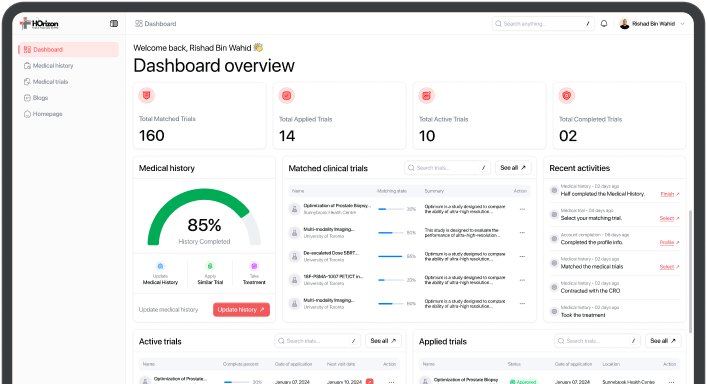A Intervention for Reducing Sedentary Behaviour Among Prostate Cancer Survivors
Contact information
Linda Trinh, PhD
University of Toronto
Toronto, Ontario, Canada, M5S 2W6
Basic information
N/A
N/A Age
120 Enrollment
Trial Details
Brief Summary
This randomized controlled trial (RCT) will aim to examine the effect of a 12-week behavioural intervention on changing the sedentary behaviours (SB) of prostate cancer survivors (PCS) compared to a control group (FitBit-only group). PCS in the intervention group will receive a FitBit and 6 behavioural support sessions with a movement specialist guided by behavioural theory (i.e., the Multi-Process Action Control [M-PAC]). The FitBit-only group will only receive a FitBit and access to public health resources on physical activity (PA). The primary purpose of this study is to determine the efficacy of the intervention on changing SB of PCS immediately following the 12-week intervention and 6-months later. It is hypothesized that that the intervention will decrease their SB compared to the FitBit-only control condition at both timepoints. This trial will also examine the effect of the intervention on changing PA, motivational outcomes from the M-PAC framework, sleep quality, social support, physical function, quality of life, fatigue, disability and mental health compared to the active control condition.
Official Title
A Distance-based, Randomized Controlled Trial for Reducing Sedentary Behaviour Among Prostate Cancer Survivors
Selection Criteria
Eligibility Inclusion Criteria
-
- >= 18 years of age
- Diagnosed with localized or asymptomatic metastatic primary prostate cancer
- Not currently undergoing radiation or chemotherapy
- Proficient in English
- Not physically active (self report <150 minutes of moderate-to-vigorous physical activity per week)
- Self-report >8 hours of daily sedentary behaviour
- In the contemplation or preparation stage for motivational readiness to change as determined by the -- - Stages of Change Questionnaire
- Access to a smartphone, tablet, or computer
- No cardiac contraindications (e.g., unstable angina, arrhythmia, heart failure, aortic stenosis)
- Medical clearance from a primary health care provider (if necessary)
- Currently residing in Canada
Eligibility Exclusion Criteria
-
- Not planning to live in Canada for the next 12 months
- A medical condition that prohibits walking (e.g., severe knee or hip arthritis)
- Presence of other primary or recurrent invasive cancer (i.e., other than non-melanoma skin cancer)
- Have had a prior fall within the last 12-months
- Use a gait aid device
